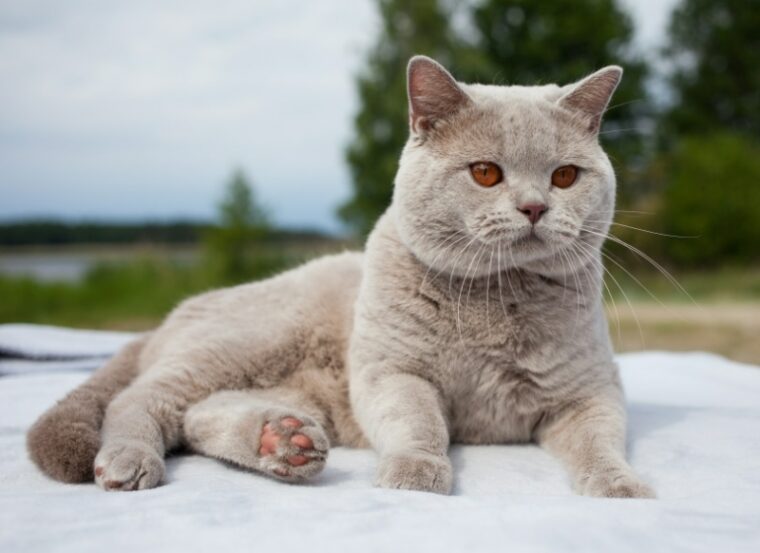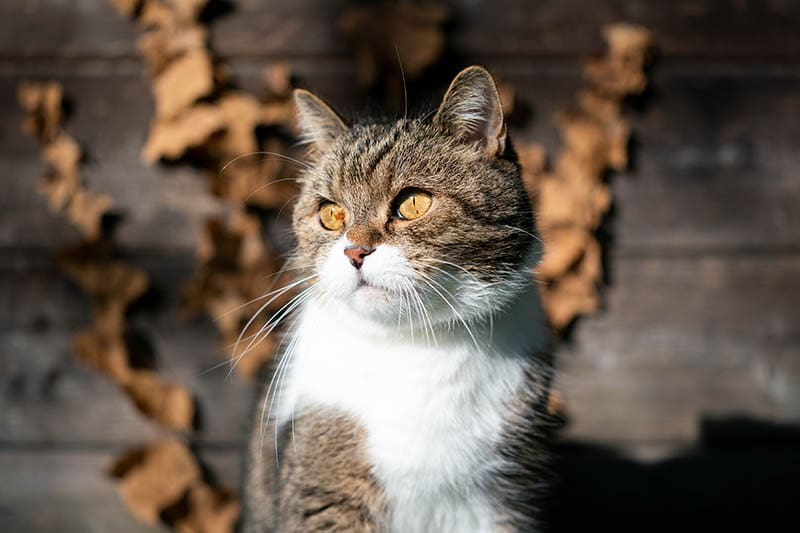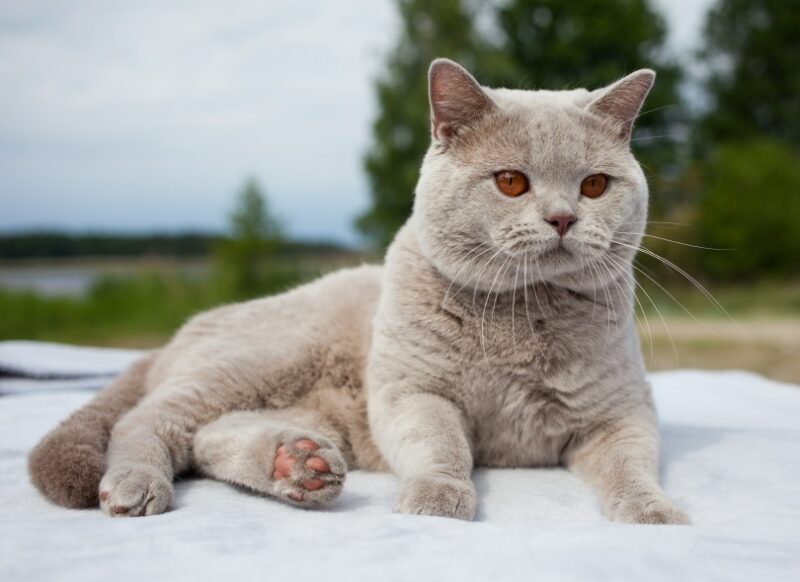
The British Shorthair Cat is considered a medium to large cat, and it’s instantly recognizable thanks to its adorable, round face and eyes. While these cats are not wildcats, they are larger than your average domestic cat, and can reach up to 22–25 inches in length. For this reason, it’s essential to know what to expect when it comes to the growth of this breed.
While all cats are individuals and will, of course, not be the same as their littermates, this information will make it easier to track your kitten’s progress as it grows and develops. So, let’s take a look at this cat in more detail.
Facts About British Shorthair Cats
There are many interesting facts about the British Shorthair cat, but we’ve picked out a few of our favorites.
1. The British Shorthair’s relationship with humans
The British Shorthair’s relationship with humans goes back to ancient Rome, and it’s considered to be the oldest breed in England.
2. Since 2001
Since 2001, this cat has been the most popular pedigree in the UK, and it’s holding firm in this top spot!
3. These cats are best in child-free homes
These cats are best in child-free homes or families with older children; young kids often think they look like dolls because of their appearance, which the British Shorthairs won’t appreciate. However, if you teach your child how to act appropriately around them, they will be fine with younger children.
4. A very healthy cat
It’s a very healthy cat with a 14–20-year lifespan.
5. Sometimes described as smiling
This cat is sometimes described as smiling, which is partly why it’s believed the British Shorthair inspired the Cheshire Cat from the 1854 novel “Alice in Wonderland” by Lewis Carroll.

British Shorthair Size and Growth Chart
British Shorthairs can reach 22–25 inches in length. Females can weigh about 9–15 pounds, and males can weigh around 18 pounds, although some have been known to reach a whopping 20 pounds. As we mentioned, these are averages. It is possible your cat won’t fit neatly into these averages, which isn’t necessarily a cause for alarm; if you are keeping up with your regular veterinarian check-ups and they are happy, keep doing what you’re doing!
| Age | Weight Range |
| 3 months | 3–3.9 pounds |
| 4 months | 4.1–4.6 pounds |
| 6 months | 5.5–5.9 pounds |
| 10 months | 6.6–7 pounds |
| 12 months | 7–7.7 pounds |
| 18 months | 7–12 pounds |
| 24 months | 9–18 pounds |
When Does a British Shorthair Stop Growing?
Generally, British Shorthairs will grow until they are 3 years old, with females stopping around then, while males can continue to put on muscle until they’re 5 years old.
You might notice a discrepancy between your cat’s weight and length, and that’s because they will generally reach the top end of their length before they reach their final weight. Sometimes, this might make your cat look a little skinny, but if your vet isn’t concerned, you have no reason to worry. If your vet thinks it needs addressing, they might suggest a change in diet, increasing their food intake, or bringing them in for tests to see if there is a deeper reason behind this development.

Factors Affecting the Size of a British Shorthair
Various factors affect a cat’s height, much like a human; genetics play a pivotal role, so you can get a rough idea of how big your cat will get if you meet its parents. Exercise and nutrition will also impact how big your British Shorthair gets, as does their general health.
While the British Shorthair is considered to be healthy, like many breeds, there are some problems they are prone to that could affect their development and growth:
If you are ever concerned about how your kitten is developing, contact your vet for advice.
Ideal Diet for Maintaining a Healthy Weight
There isn’t just one diet or brand that will appeal to all British Shorthairs, but the most important aspect of a nutritious diet is keeping the proteins high and getting the right balance of carbohydrates and fats. Many brands have food for specific life stages since what a kitten needs from their food differs from an adult’s requirements. If you’re unsure where to start, your vet can give you some recommendations.
Health problems arise from an overweight or underweight cat, so it’s crucial that you pick the right diet. If you suspect your cat is overweight or underweight, contact your vet before adjusting their diet. Sometimes it isn’t a case of only reducing or increasing their food intake. Instead, changing the brand might be more beneficial.

How to Measure Your British Shorthair
The easiest way to get an accurate weight and measurement is to take your cat to the vet because doing this on your own can be tricky. British Shorthair cats dislike being handled too much or picked up. However, if you think your cat will allow it, there are ways to go about it that are relatively stress-free.
A scale designed for humans works; you can weigh yourself first and then weigh yourself while holding your cat. This won’t be totally accurate, which is why we suggest going to the vet, but it should give you a rough idea of how heavy your cat is.
If you want to measure your cat’s length, you will need them to cooperate with you, so you might need someone else to help keep them still. Using a cloth tape, measure from their nose to the base of their tail.
Conclusion
British Shorthairs are slower to mature than other breeds, and generally, the males will be larger than the females. Many factors affect how big a cat will be, such as genetics, diet, exercise, and overall health.
The best way to ensure your cat is thriving is to attend your scheduled vet visits, where you can get advice on the best diet and keep up with how it’s developing. If you’re ever worried about your cat, you don’t have to wait until your next appointment. You can contact your vet for advice to ensure your lovable British Shorthair is healthy.
Featured Image Credit: outdoor_Rutina, Shutterstock






